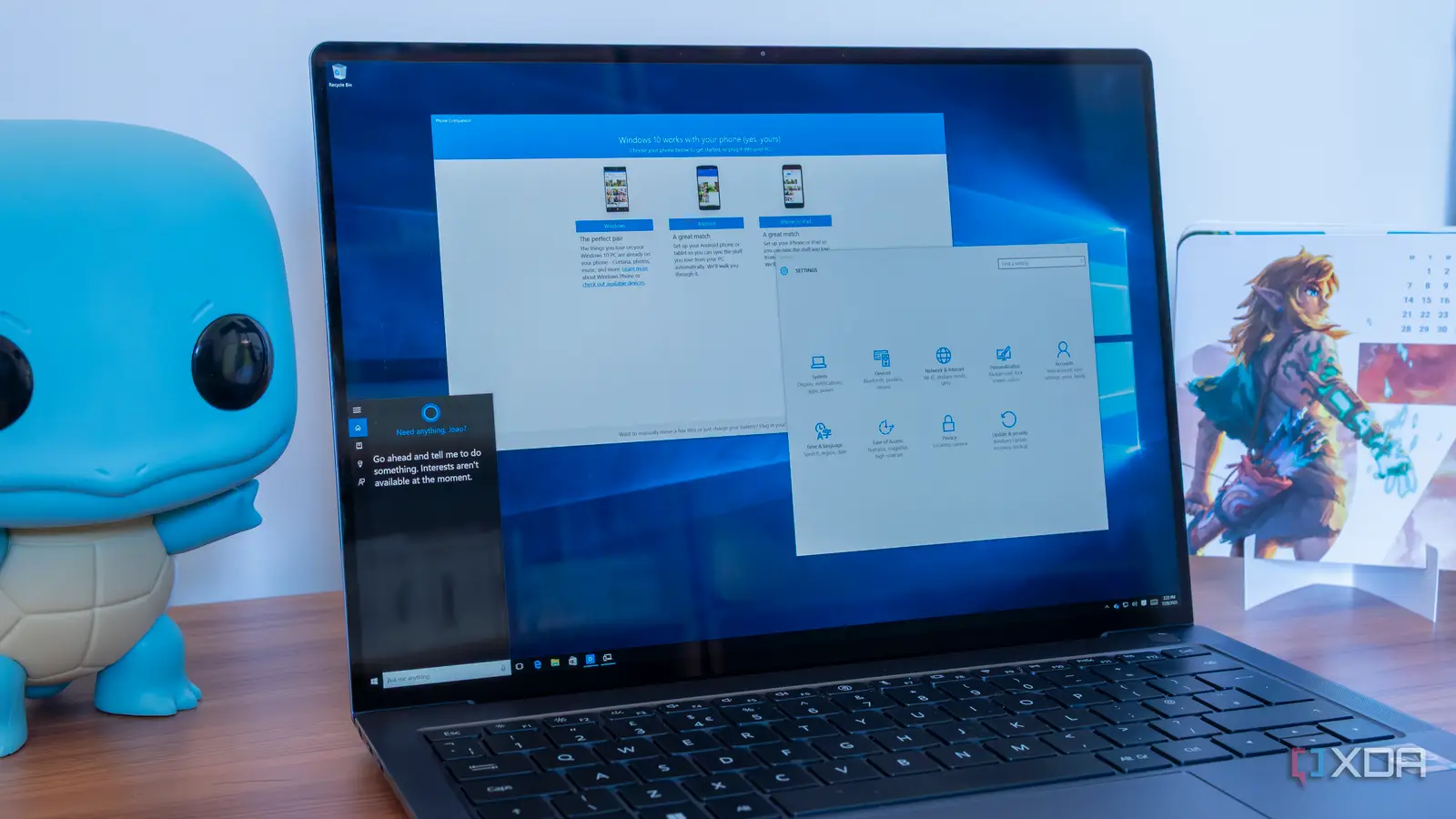Copyright XDA Developers

Windows 10, released in July 2015, reached its end of life on October 14, 2025, over ten years after its debut. It was touted as one of the best Windows iterations to date. At its peak, Windows 10 dominated the landscape, with over 80% market share among Windows PCs, according to StatCounter. The numbers dropped post the release of Windows 11, though not as drastically as many expected. But months before Microsoft was to officially pull the plug on Windows 10, its share had already dwindled, dropping by over 10% in the past six months. That brings us to the question: Is Windows 10 dying soon? Statistically speaking, the answer is no. The numbers suggest Windows 10 will remain a primary player in the landscape and won’t fade into oblivion for at least a few more years. Windows 10 still has a 40% market share That’s every two in five Windows PCs As of September 2025, Windows 10 sits comfortably at over 40%. That’s massive, considering it was just days away from the end of support at the time. The numbers for October 2025 haven’t been released yet, but since Microsoft decided to offer free ESU (Extended Security Updates) to almost everyone, a significant drop in the share of Windows 10 is unlikely. Besides, it’s clear that users aren’t planning to ditch Windows 10 anytime soon for Windows 11 or an alternate operating system. I have come across countless users who insist on installing a third-party antivirus, using their PC in a siloed environment, or even switching to the LTSC (Long-Term Servicing Branch) edition of Windows 10. Recent research by Which? also suggests that roughly 25% of users plan to keep using Windows 10 after support ends. The LTSC edition isn’t something I recommend or plan to use on my secondary PC, but restricting network activity and being more cautious with my online activity are viable approaches. Let’s not forget, a few are still running Windows 7, five years after its end of life. But again, that’s something most of us don’t have to worry about, given the free security updates for another year, i.e., until October 13, 2026. The popularity of Windows 10 hasn’t faded over time Beyond the numbers Windows 10’s popularity isn’t just a result of its UI or feature set, but it’s also driven by three key factors. First is the failure of Windows 8. According to user reviews, the iteration preceding Windows 10 was a disaster. So, when it arrived, users were quick to jump ship. Additionally, numerous Windows 7 users who skipped Windows 8 due to its interface embraced Windows 10 with open arms. Then Windows 11 changed too much. The OS sported a modern UI, and the Settings app underwent a major transformation. However, the new right-click context menu wasn’t a hit, the Control Panel lost much of its functionality over successive updates, and the new Action Center didn’t deliver the response Microsoft anticipated. Then, other parts of the OS kept changing over the years, and while most of it was well-liked, some updates received their fair share of criticism. Lastly, there’s TPM 2.0 and Secure Boot, key reasons a number of PCs were rendered ineligible for the upgrade. While you can bypass these two and install Windows 11 on unsupported PCs, it’s not something most regular users would get into. To be honest, had I not ventured into the tech niche, I wouldn’t be too inclined to do that either! Windows 10 still has a few years left Before it’s eclipsed by Windows 11 (or Windows 12) As a result, Windows 10 still enjoys a massive base. I have two laptops, one running Windows 11 and the other still on Windows 10. And I don’t plan to switch operating systems immediately or let go of the older laptop simply because Microsoft dropped support for Windows 10. I will just be more careful in how I use the system. Of course, with the free ESU until next year, I have more time to evaluate my options. As do most of you! That brings us to a more important question: how long will it be before Windows 10 finally fades into oblivion? Even by conservative estimates, it will take another five years because most existing users with unsupported hardware aren’t going to ditch their system immediately or learn a whole new OS. They will simply keep using Windows 10. It’s going to be another 3–5 years for the vast majority to replace the aging, unsupported hardware. The only way I see it happening sooner is if Microsoft releases a newer Windows iteration — one that’s more user-oriented and gets the basics right — or if apps drop support for Windows 10 earlier than expected. Even the widely discussed “alternate version curse” theory suggests that the next Windows iteration will witness a much better reception. But there’s still no official confirmation from Microsoft about Windows 12 or any new iteration replacing Windows 11. In the current scheme of things (free ESU until 2026, no new iteration), Windows 10 will remain relevant for years to come and retain a considerable user base. As I said, I am not abandoning Windows 10, and I believe many others share the same thought process. As long as major apps support it, I am sticking with Windows 10! Windows 10 delivered what we needed the most Simplicity, stability, and performance While Microsoft has moved on, many users haven’t yet made up their minds. They are unwilling to let go of Windows 10, and for good reason. The OS is stable, optimized for performance, compatible with every major app, and most importantly, it’s familiar. For most, getting used to a new interface can be challenging, assuming they have compatible hardware. As for those who don’t, the end of support for Windows 10 also entails an additional expense, one that seems forced and unnecessary. So, although there’s talk of Windows 10 reaching its end, the OS is far from dead. And even when it finally becomes obsolete, Windows 10 will remain etched in our memories as one of the best operating systems ever.



